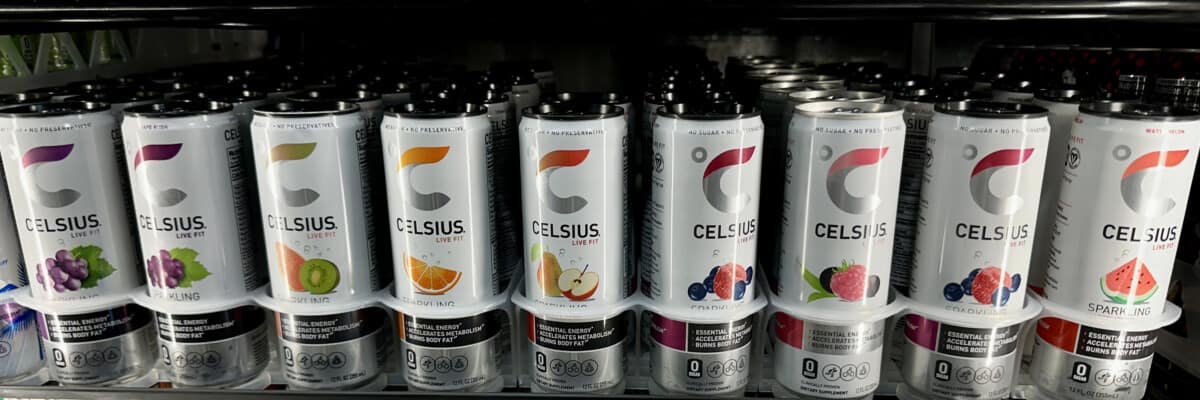It can be confusing trying to find a cooking oil that’s healthy and good for losing weight.
There are a ton of different options out there for cooking oils. Some are better for frying while others are best used as dressings.
Cooking oils differ in their fat ratios, smoking point and how they’re processed.
These factors play a big role in how healthy they are for you. While there are some cooking oils that will help with weight loss others will do the opposite.
It’s important to know the differences between the major cooking oils before using them with your food.
It’s confusing knowing which cooking oil is the healthiest. You’ll soon know the best oils to cook with for every situation.
And they’ll help you lose weight.
Which Cooking Oils Are Good For Health?

First of all, you’re going to need to know all cooking oils are high in fat.
Every tablespoon of cooking oil has 13 grams of fat which equates to around 120 calories. This doesn’t seem like a whole lot but it can add up on top of the food you’re eating.
This isn’t to say eating fat is bad for you.
There are studies proving a higher fat diet will make you weigh less. You’ll also have less belly fat than those on a higher refined carbohydrates diet.
It’s important to note the different kinds of fats in cooking oils.
Monounsaturated and polyunsaturated are the best fats you can eat. The ratio between the fats will also determine whether the oil is a solid at room temperature or liquid.
Even though your body needs saturated fats it’s still best to keep them on the lower end of your fat intake.
The majority of your fats should be from monounsaturated and polyunsaturated sources. With omega-3 fatty acids making up the bulk of your oil intake.
Your body needs fats to thrive and keep losing weight. The right cooking oils are the good kinds of fats.
What To Look For In Your Cooking Oils

Cold processed and expeller pressed cooking oils are better for your health.
Next time you’re in the grocery store look for cooking oils that have been processed using these methods.
Cold pressed oils are pressed at low temperatures. This helps to keep their flavors and nutrients that are otherwise lost in the heating process.
Expeller pressed cooking oils are mechanically extracted (squeezed) instead of via chemicals. This a cleaner way of extracting the oils instead of using nasty chemicals.
The main reason we use cooking oils with our food is they can more easily transfer heat to the food that’s being cooked. This makes things much faster.
Cooking oils can also add flavor to your food. If you don’t like the taste of some healthy foods then adding some oil can help to enhance the flavor.
Know Your Smoking Points

The smoking point of cooking oils is the temperature at which oils start to break down.
You’ll usually see wisps of smoke coming off the oil once it reaches its smoking point. Once the cooking oil reaches its smoking point there will be a loss of nutrients. It’ll also develop weird flavors.
Depending on their makeup cooking oils will have differing smoking points. It’s best to know each individual smoking point so you don’t cook with the wrong one.
Cooking oils with a low smoking point are best used as dressings and for drizzling on top of foods. Frying and sautéing are best for cooking oils with a high smoking point.
It’s best to keep your oils in a cool dark place and well sealed. Oxidation can occur when the oil is exposed to heat and oxygen. Then it’ll become rancid and toxic to your body.
It’s best not to consume oxidized cooking oils that have become rancid.
Monounsaturated Fats Are King

The healthiest cooking oil you can use to lose weight are those high in monounsaturated fats.
These fats are heavily associated with weight loss. The more fats you can get into your diet of the monounsaturated variety the better.
Some of the healthiest cooking oils high in monounsaturated fats are:
- extra virgin olive oil
- avocado oil
- canola oil
- sunflower oil
Along with monounsaturated fats be sure use cooking oils higher in omega-3 fatty acids.
Omega-3 fatty acids will help to lower inflammation in your body. The modern Western diet creates an imbalance of omega-6 fatty acids in your body resulting in weight gain and inflammation.
Adding more omega-3 fatty acids in your diet will help you lose weight and belly fat. This is one of the reasons why it’s important to supplement with krill oil.
The Healthiest Cooking Oil Choices
Macadamia Nut Oil

Macadamia nut oil is my favorite cooking oil to use. It’s super high in monounsaturated fats making up 80% of its content.
Saturated fats only make up 16% of macadamia nut oil. It’s also very low in the omega-6 fatty acids.
Macadamia nut oil has a higher smoking point (410-453 degrees) so it’s great for frying foods.
Try using macadamia nut oil the next time you’re frying up some eggs. They’ll taste way better than any other oil.
You can check out my other blog post on the best low carb breakfast ideas here.
There are a good amount of various antioxidants in macadamia nut oil too. Squalene is one that is present in human skin surface lipids.
Macadamia nut oil will help rejuvenate your skin and slim your waistline.
This is my favorite brand of macadamia nut oil.
Coconut Oil

Coconut oil is one of the more controversial cooking oils on this list.
That’s because it’s high in saturated fats. But don’t let that scare you off.
These saturated fats are in the form of lauric acid. This is immediately processed by your liver and converted into energy instead of being stored as fat in your body.
Studies are finding a link between coconut oil and weight loss.
Coconut oil is resistant to damage from heat. This will help keep you from eating oxidized fats.
Since coconut oil has a lower smoking point of 350 degrees it’s best used for baking and not frying.
Coconut oil is also a powerful gut healing food that can help cure leaky gut syndrome.
Extra Virgin Olive Oil

Extra virgin olive oil is the most popular cooking oil to make the list. Everybody knows how healthy it is for you.
Extra virgin olive oils are very high in healthy monounsaturated fats. Make sure you buy extra virgin since it’s naturally processed.
This helps to retain its purity and will taste better too.
In fact, those on a Mediterranean diet are more likely to weigh less and have improved cardiovascular health.
Since extra virgin olive oil has a rather low smoking point of 325-375 degrees its best not used for frying.
Structural integrity will begin breaking down once extra virgin olive oil reaches its smoking point. So you’ll need to be careful cooking with it.
Then the flavor and nutrition of the oil will degrade rapidly. Extra virgin olive oil is best used for dressing and drizzling onto foods.
Extra virgin olive oil makes my superfoods list and should be a regular staple in your diet.
Avocado Oil

Avocado oil is the new favorite on the block for healthiest cooking oil.
It’s very high in monounsaturated fats with them making up 70% of its composition.
Avocado oil has a neutral flavor without the chemical processing of other oils. This oil is terrific if you’re trying to avoid refined foods.
It’s a little more expensive than the other cooking oils here so it may not be the best if you’re on a budget.
It has a relatively high smoking point at 375-400 degrees so it’ll be good for frying.
I even like to drizzle it on my salads for extra flavoring.
Flaxseed Oil

Flaxseed oil is incredibly high in omega-3 fatty acids. Just be sure you don’t cook with it.
Flaxseed oil has a very low smoking point so it’s best to oil supplement with it or use as a dressing.
Make sure you store it in a cool dark place since it’s very susceptible to oxidation.
Walnut Oil

If you’ve never cooked with walnut oil then what have you been doing with your life?
Walnut oil is high in monounsaturated and omega-3 fats. It’s also rich in antioxidants such as ellagic acid.
Antioxidants help to fight off the damage-causing free radicals in your body. Antioxidants help to detoxify you from the ‘toxic waste’ in your body that can cause cancer.
A Yale study found eating walnuts daily helped to decrease the risk of heart disease by improving the health of blood vessels.
Try finding an unrefined walnut oil that has been cold-processed. It has a short shelf life of 6-12 months so be sure to use it quickly.
Store in a cool dark place to keep it from going rancid. Walnut oil has a low smoking point of only 320 degrees so its best not used for cooking.
The Next-Best Choices
Sesame Oil

Sesame oil is not the healthiest choice for a cooking oil. It’s much higher in omega-6 fatty acids with a ratio of 48:1.
Sesame oil can add a lot of flavor to your dish and you won’t need a lot to do the trick.
It’s a great alternative to peanut oil if you can’t eat peanuts or don’t like the flavor.
It has a high smoking point of around 350-410 degrees so you can cook with it.
Just don’t use it too often.
Peanut Oil

The problem with peanut oil is it tastes too much like peanuts. This isn’t a bad thing if you’re looking to add peanut flavor to your food.
Peanut oil is much higher in omega-6 fatty acids so it’s best to limit your consumption.
Most peanut oils are heavily processed, but if you can try to find an unrefined version.
Peanut oil has a high smoking point of 450 degrees so it’s best used for frying and sautéing your foods.
Palm Oil

Palm oil is very high in saturated fats but also contains some monounsaturated fats.
It has a high ratio of omega-6 fatty acids with a 46:1 ratio to omega-3s.
This study found those who consumed palm oil had higher LDL cholesterol levels. This was compared to those who consumed other cooking oils.
Palm oils are also contributing to deforestation. Palm trees are best grown in tropical forests in Malaysia, Indonesia, and Thailand.
Palm tree farms are destroying tropical forests. Make sure if you do buy palm oil to get it from ethical RSPO certified brands.
Sunflower Oil

Sunflower oil contains the highest amount of polyunsaturated fats at 69%.
It’s 20% makeup of monounsaturated fats is also impressive. But it’s high ratio of 40:1 omega-6 to omega-3 fatty acids means you should limit your consumption.
Researchers did find sunflower oil did help to reduce total and LDL cholesterol. Elevated levels of this cholesterol have been associated with cardiovascular disease.
Sunflower oil can withstand high cooking temperatures. It has a smoking point of 440 degrees.
It’s best used for cooking and sautéing your dishes.
Worst Cooking Oil Choices
Soybean Oil

The big problem with soybean oil is the high amount of omega-6 fatty acids it contains.
This study found soybean oil to contribute to obesity and could damage your metabolic health.
Soybean oil is also from GMO plant sources.
A higher intake of omega-6 fatty acids is associated with an increase of inflammation in your body.
Soybean oil does have a higher smoking point of 450 degrees so it can be used for cooking.
But it’ll be best if you avoid cooking with soybean oil if possible.
Canola Oil

Canola oil is another controversial cooking oil on my list of the healthiest.
Growing up I remember canola oil was made out to be one step away from cooking with toxic waste.
This was totally untrue. This is because canola oil is associated with fried foods.
Canola oil is quite high in monounsaturated fats at around 62%. Polyunsaturated fat makeup comes in at around 32% too.
There are a good amount of omega-3 fatty acids in canola you’d be missing out on from avoiding it.
This study by Nutrition Reviews found consuming canola oil helped to reduce total and LDL (bad) cholesterol.
Eating more canola oil can help you lose belly fat too.
Canola oil has a very high smoking point so it’ll be great for frying, sautéing and baking.
If you’re at all still worried about cooking with canola oil then you should find one that is from a non-GMO source.
See my full article on why canola oil is good for you.
Corn Oil

Corn oil has a very high ratio of omega-6 to omega-3 fatty acids at 49:1.
It’s best to limit corn oil in your diet since they’re also from GMO plant sources.
This 2009 study by the International Journal of Biological Sciences found consumption of genetically modified corn caused health problems.
Some of these health problems found in rats include toxicity of:
- liver
- kidney
- adrenal glands
- spleen
- heart
Your risk of toxicity increases the more genetically modified corn you consume.
The Journal of the American Medical Association found mice would overeat corn oil over the long term.
This led to increases in body weight and obesity compared to mice that didn’t eat corn oil.
Safflower Oil

Safflower oil is high in unsaturated fats and lower in saturated fats.
It has a very high smoking point at 510 degrees. It’s best used for frying and sautéing.
Most safflower oils are chemically processed. It’ll be best to find one that has been cold-pressed.
Safflower oil is very high in omega-6 fatty acids without any omega-3s. But it does contain CLA which is associated with weight loss.
It has less flavoring than other oils, but it’s also a whole lot cheaper than other healthy cooking oils.
If you’re on a budget then safflower oil may be a good option for you.
Conclusion
The healthiest cooking oils for weight loss are those high in omega-3 fatty acids and monounsaturated fats.
The best cooking oil options are:
- macadamia nut oil
- coconut oil
- extra virgin olive oil
- avocado oil
- flaxseed oil
- canola oil
- walnut oil
Make sure you’re aware of the smoking points of these cooking oils to prevent them from oxidizing. This is when the nutrients are lost and it’ll develop an off-flavor.
Since cooking oils are mostly made up of fats you should be aware of the calorie content.
Eating more healthy fats will help you lose weight compared to those on a low-fat diet.
Start cooking and dressing your foods with the above list of cooking oils. You’ll improve your heart health and slim your waistline.
Some vegetable oils are bad for you and unhealthy but others are great for you.
Choosing the healthiest cooking oils can help shed pounds off while adding some fantastic flavor to your dishes.
Josh holds a Bachelor’s degree in Exercise Physiology and Nutrition Science. He’s a Certified Strength and Conditioning Specialist (CSCS) by the National Strength and Conditioning Association and he’s a Certified Personal Trainer (CPT) by American Council on Exercise. He’s worked as a Strength and Conditioning Coach at the high school and college levels. He has over 15 years of experience as a personal trainer and nutrition coach. He strives to bring inspiration and results for people to live healthier lives through smart diet and exercise.








